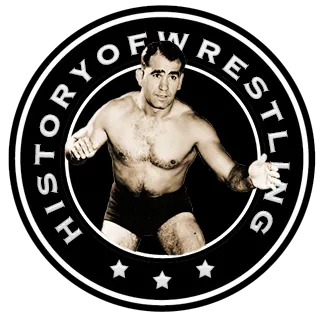May 23, 1999, Kansas City, Missouri
 Owen Hart was, in many ways, the perfect person to be a professional wrestler. He was a member of the famous Hart wrestling family, and thus he was an outstanding technician, with some suggesting that he was better than his Hall of Fame brother, Bret. He also had the ability to do great promos, when called upon, and he had the mentality on the road and became legendary for pulling pranks upon his fellow wrestlers. But he also had a plan in place for after he retired from wrestling. That plan would never come to fruition.
Owen Hart was, in many ways, the perfect person to be a professional wrestler. He was a member of the famous Hart wrestling family, and thus he was an outstanding technician, with some suggesting that he was better than his Hall of Fame brother, Bret. He also had the ability to do great promos, when called upon, and he had the mentality on the road and became legendary for pulling pranks upon his fellow wrestlers. But he also had a plan in place for after he retired from wrestling. That plan would never come to fruition.
Owen began wrestling in his father’s Calgary based promotion, Stampede Wrestling. Early on, people could see that Owen was special, with only his lack of height being a hindrance. He was named Pro Wrestling Illustrated’s Rookie of the Year Award in 1987 and was highly sought after, soon journeying to Japan to wrestle for the New Japan Pro Wrestling (NJPW) promotion. There, in 1988, he became the first non-Japanese wrestler to win the IWGP Junior Heavyweight Championship, defeating Hiroshi Hase. That success, as well as his father’s relationship with Vince McMahon, the owner of the World Wrestling Federation (WWF), saw him getting an opportunity to wrestle in the promotion under the masked gimmick “The Blue Blazer.” After less than a year, he left the WWF to tour Canada, Japan and Mexico. He moved to World Championship Wrestling (WCW) in 1991, but returned to the WWF for good later that year. He was used as a mid-card talent for the most part, often helping to make other developing talents shine. He did have a number of prominent feuds,however, the most noteworthy being against his brother Bret Hart. When Bret left the promotion after the Montreal Screwjob, McMahon refused to allow Owen to leave with him for WCW. He lingered in a mid-card role and was in the midst of a feud with the Godfather, performing as the Blue Blazer. On May 23, 1999, at the “Over the Edge” Pay-Per-View, Owen ascended to the catwalk at the top of the Kemper Arena in Kansas City, Missouri. He was being lowered to the ring via harness and grapple line when a malfunction occurred and Hart fell 78 feet, landing chest-first on the top rope before falling back into the ring.
The auditorium was dark as the fans were viewing a promotional video and there was confusion around the ring. Medics raced to the scene and began performing emergency care upon him before he was raced to the Truman Medical Center where he was pronounced dead at the age of 34. The cause of death was revealed to be internal bleeding from blunt force trauma. While the crowd in attendance, as well as hundreds of thousand watching the PPV at home, were in a state of shock, Vince McMahon decided backstage to continue the show, a decision that caused a great deal of controversy for years to come. The WWF presented a tribute to Owen the next night on Monday Night Raw, with numerous wrestlers breaking down into tears expressing their feelings for him. His funeral was held on May 23, 1999, with family, friends and numerous members of the wrestling community in attendance. In the months following, there were numerous investigations into the accident. Owen’s wife, Martha, sued the WWF and the manufacturer of the harness system, claiming negligence in the planning of the stunt and in the design and implementation of the harness system. The case was settled on November 2, 2000 with Owen’s family being awarded $18 million, the proceeds from which Martha used to establish the “Owen Hart Foundation.” Martha authored a book entitled “Broken Harts: The Life and Death of Owen Hart” in 2002 and on December 7, 2015, the WWE (previously WWF) released “Owen: Hart of Gold” on DVD and Blu-ray. Sadly, Owen Hart will likely be remembered more for the way he died, than for his legacy as a professional wrestler and a beloved human being.


